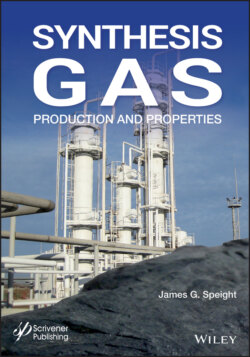Читать книгу Synthesis Gas - James Speight G., James G. Speight - Страница 25
1.4.3 Physical Factors
ОглавлениеCrude oil reserves (Speight, 2011a, 2014a) are the estimated quantities of oil that are claimed to be recoverable under existing operating and economic conditions. However, because of reservoir characteristics and the limitations of current recovery technologies only a fraction of this oil can be brought to the surface; it is this producible fraction that is considered to be reserves. Crude oil recovery varies greatly from oil field to oil field based on the character of the field and the operating history as well as in response to changes in technology and economics.
According to current estimates, more than three-quarters of the oil reserves of the world are located in OPEC countries. The bulk of OPEC oil reserves is located in the Middle East, with Saudi Arabia, Iran and Iraq contributing 41.8% to the OPEC total. OPEC member countries have made significant contributions to their reserves in recent years by adopting best practices in the industry. As a result, OPEC proven reserves currently stand at 1214.2 billion barrels (1214.2 x 109 bbls) which represented 71.9% of the total crude oil reserves (BP, 2019).
There has been surprise at the OPEC estimates of proven reserves (Campbell and Laherrère, 1998) since OPEC estimates increased sharply in the 1980s, corresponding to a change in quota rules instituted by OPEC that linked a member production quota by a member country in part to its remaining proven reserves. Indeed, companies that are not subject to the federal securities laws in the United States and their related liability standards, include companies wholly owned by various OPEC member countries where the majority of reserves are located. In addition, many OPEC countries’ reported reserves remained relatively unchanged during the 1990s, even as they continued high levels of oil production. For example, estimates of reserves in Kuwait were unchanged from 1991 to 2002, even though the country produced more than 8 billion barrels (8 x 109 bbls) of crude oil over that period and did not report any new oil discoveries. The potential disbelief in the data reported by OPEC is problematic with respect to predicting the timing of a peak in oil production because OPEC holds most of the current estimated proven oil reserves of the world.
The United States Geological Survey provides oil resources estimates, which are different from proved reserves estimates. Oil resources estimates are significantly higher because they estimate the total oil resource base of the world, rather than just what is now proven to be economically producible. Estimates of the resource by the United States Geological Survey base include past production and current reserves as well as the potential for future increases in current conventional oil reserves (often referred to as reserves growth) and the amount of estimated conventional oil that has the potential to be added to these reserves. Estimates of reserves growth and those resources that have the potential to be added to oil reserves are important in determining when oil production may peak.
Further contributing to the uncertainty of the timing of a peak is the lack of a comprehensive assessment of oil from nonconventional sources. For example, estimates of crude oil longevity have only recently started to include oil from non-conventional sources (BP, 2019) and oil from these sources was not included in early peak oil theories. Yet oil from non-conventional sources exists in substantial amounts, which could greatly delay the onset of a peak in production. However, challenges facing this production (Speight, 2008, 2011a, 2014a, 2016) indicate that the amount of nonconventional oil that will eventually be produced is, like the peak oil theory, highly speculative. However, despite this apparent uncertainty, development and production of oil (synthetic crude oil) from the Alberta tar sands and Venezuelan extra-heavy crude oil production are under way now and the refining technologies are being adapted to produce liquid fuels from these sources (Speight, 2008, 2013b, 2013c, 2013d, 2013c, 2014a).
